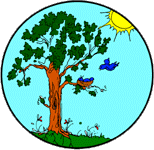|
|
1. Which of the following is not a cell organelle?
2. What is the name of the football-shaped plant organelle where photosynthesis takes place?
3. Where is most DNA found?
4. Which of the following organisms reproduce asexually?
5. The brain belongs to which organ system?
6. Which organ system is responsible for the break down of food?
7. A calorie refers to:
8. Which type of muscle cell is found in the heart?
9. Which of the following does not represent voluntary muscle movement?
10. Which of the following structures is not present in an animal cell?
11. What types of organisms undergo photosynthesis?
12. What are the non-flowering seed plants called (pines, redwoods, etc.)?
13. Corals are most closely related to what organism?
14. Which of the following animals produces a pellet?
15. Explain how you can use owl pellets to determine
the population of the organisms they eat. ANSWERS: 1.(D); 2.(B); 3.(A); 4.(A); 5.(D); 6.(D); 7.(C); 8.(C); 9.(A); 10.(B); 11.(D); 12.(A); 13.(B); 14.(A); 15. Make sure students point out that you can calculate the population of the organisms by counting the number of individual rodents that the owl ate. You can also determine the general age of the rodents the owl ate from the bones. |

 Life
Cycle
Life
Cycle